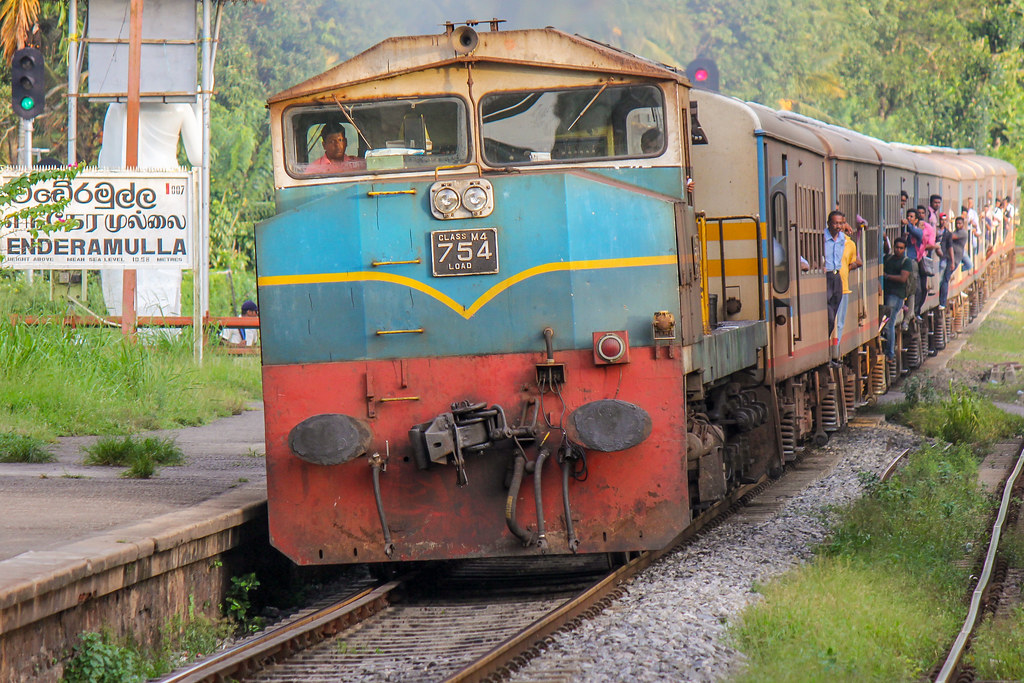Outdated trains and obsolete signalling plague Sri Lanka's railway system
Overcrowded carriages and delays are the order of the day. The country's infrastructure is not adequate to support modern rail traffic. 72% of locomotives are over 40 years old: concerns about safety and efficiency. The new Chinese carriages, which cost 22 million dollars, are unusable. Experts: ‘Urgent action to avoid effects on the economy and commuters’.
Colombo (AsiaNews) - Sri Lanka's railway system - which covers about 1500 km - is in an alarming condition. Overcrowded trains and excessive delays are the order of the day. In addition to the obsolete signalling system that hinders modern railway traffic, according to senior officials of the Department of Railways, 72 per cent of the locomotives are more than 40 years old, raising serious concerns about safety and efficiency.
In addition, the railway carriages purchased by China between 2007 and 2024 with a huge investment (over 22 million dollars) are unused because they are not compatible with the Sri Lankan railways.
In light of this, experts are urging immediate investment in the purchase of new locomotives, the upgrading of signalling systems and the adaptation of tracks to avoid the now frequent delays and operational failures.
Disrupting a system that involves the use of locomotives beyond their expected lifespan, relying on outdated technology. While the new Chinese carriages - at least a hundred of them - are stuck in construction sites and workshops due to problems with the braking systems. The drivers complain that the disc braking system is not suitable for the country's tracks and have refused to put them into circulation.
According to railway officials, in addition to the obsolete technology there is another critical issue. ‘During peak hours, rail transport capacity is far below demand, causing severe congestion and delays for thousands of commuters’.
Because of this problem, doubts are emerging about the country's ability to manage its transport needs, given that the demand for rail services is growing every year. ‘Concerns are being raised about the future of Sri Lanka's railway system, a vital transport network for both passengers and goods’.
In Colombo, rail congestion during peak hours is reaching critical levels, making ‘remedial’ interventions that can guarantee travel essential.
‘Since the Department of Railways is unable to address these issues by directing resources and taking care of the infrastructure, urgent action is essential to prevent the rail system from deteriorating further, with significant consequences for the economy and commuters,’ engineering scholars Neville Kalupahana and Oshantha Mendis told AsiaNews.
‘Neighbouring countries are making great strides in railway development, while ageing engines, dilapidated tracks and obsolete technology suggest that Sri Lanka has lagged behind its South Asian counterparts,’ the scholars added.
’The Department of Railways has yet to present a comprehensive plan to address these issues. For this reason, commuters are waiting for the government to take the necessary measures to avoid a large-scale crisis in the Sri Lankan railway network.
Meanwhile, 90 out of 100 Chinese railway carriages are out of service due to problems with the braking systems. The compartments have been left unattended at the Dematagoda, Maligawatta, Jaffna and Anuradhapura sites.
The trains were obtained by spending 22,105,200 dollars as part of a soft loan from the Chinese government. They were only used from 2007 to 2019 for passenger transport on the Polgahawela, Bangadeniya, Batticaloa and Jaffna railway lines. Then, due to problems with the braking systems, they remained unused: now they are full of cobwebs, with dusty seats.







.png)










